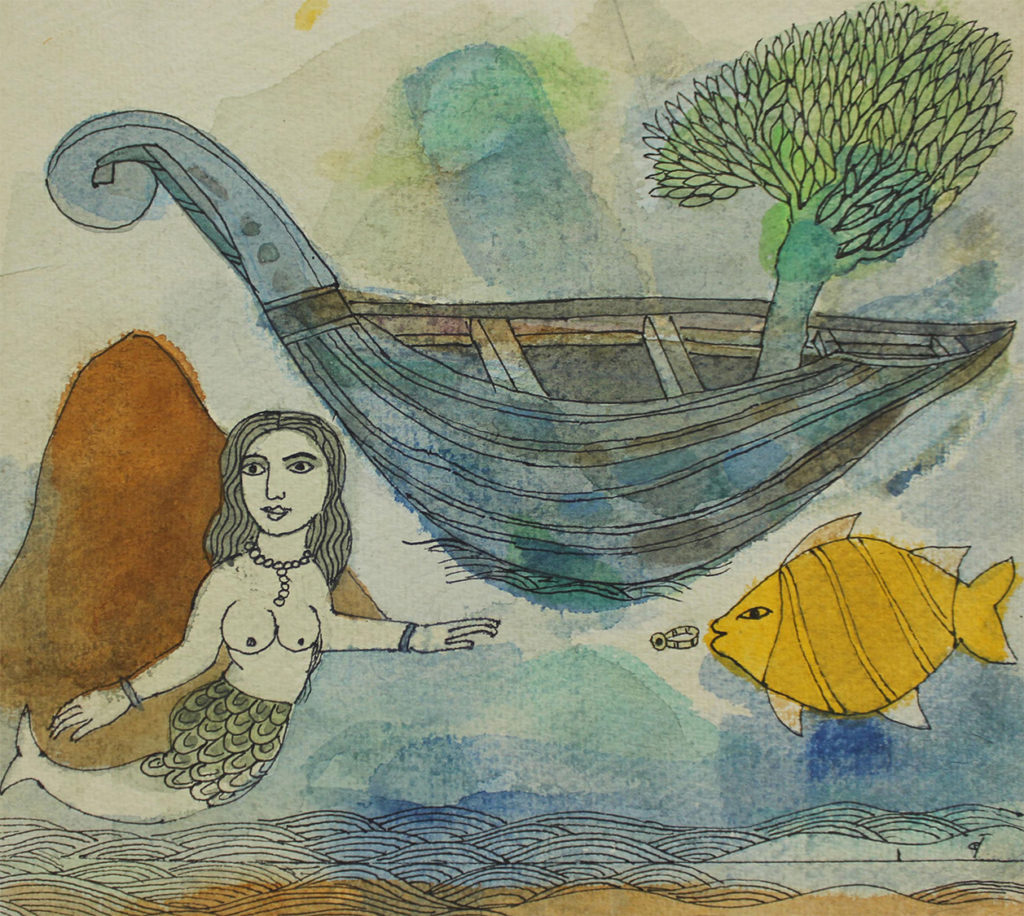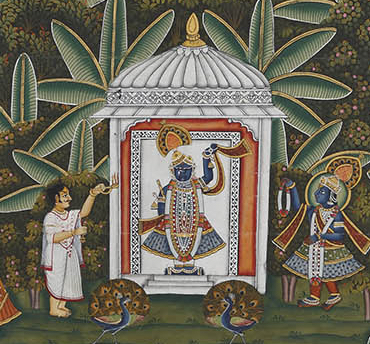Bedtime stories
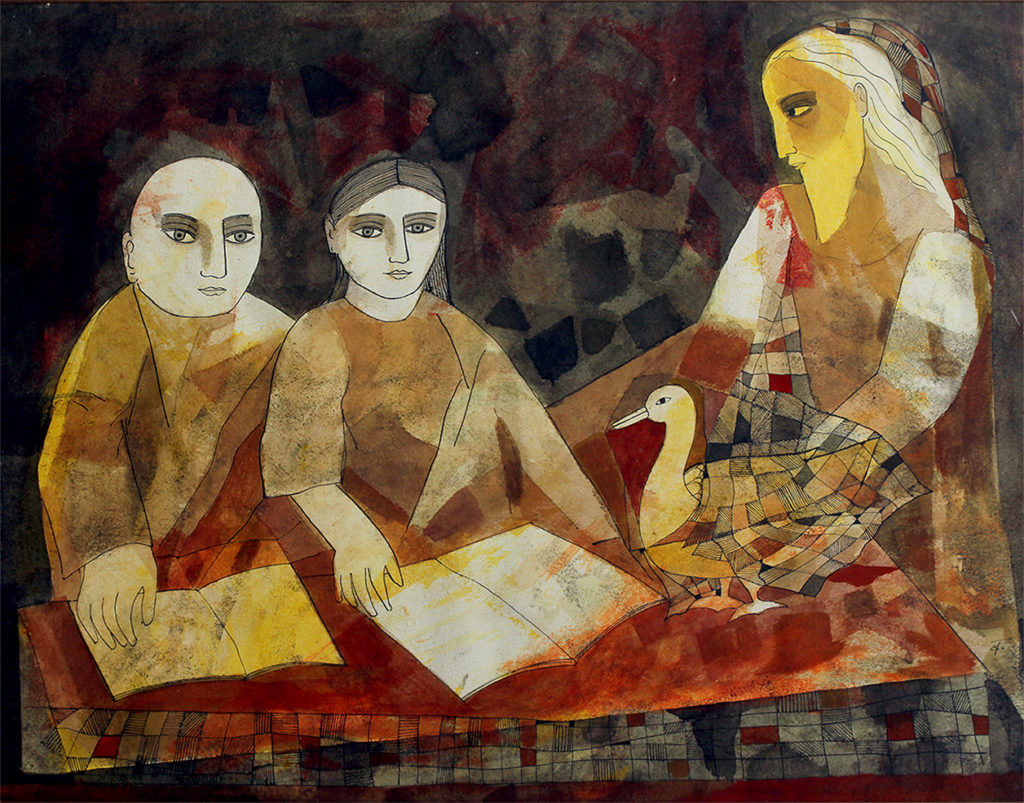
‘Dream of Hamsa’ by Badri Narayan from the Sarmaya collection
Most short biographies of Badri Narayan will tell you he’s a self-taught artist who held onto his childhood fascination for Indian fables, the kind you associate with a favourite grandparent and a cherished bedtime ritual. But this sentence on a BlouinArtinfo bio reveals that this interest went deeper: “As a child, he developed an overwhelming love for storytelling, regaling family and friends with epic narratives and fables of his own making. He eventually began creating small-scale drawings to accompany his imaginative excesses, taking inspiration from the traditional Indian genre of miniatures.”
Badri was no passive listener of tales; he sought active engagement with them. He was adept at illustrating mythological realms and did so for serious academic works as well as children’s literature. But he was also curious about the inner lives of these mythical characters; he evoked empathy for them by showing them as mortals grappling with difficult choices. Or then, he introduced a note of fantasy into a well-worn plotline with the inventiveness of a child. Imagine if a mermaid could intercede on Shakuntala’s behalf and rescue Dushyanta’s ring from the belly of a fish. Wouldn’t that secure their happily-ever-after a bit sooner and spare heartache all around? The creative muscle that children flex so unconsciously when they make art—Badri never lost the use of it.
Legends
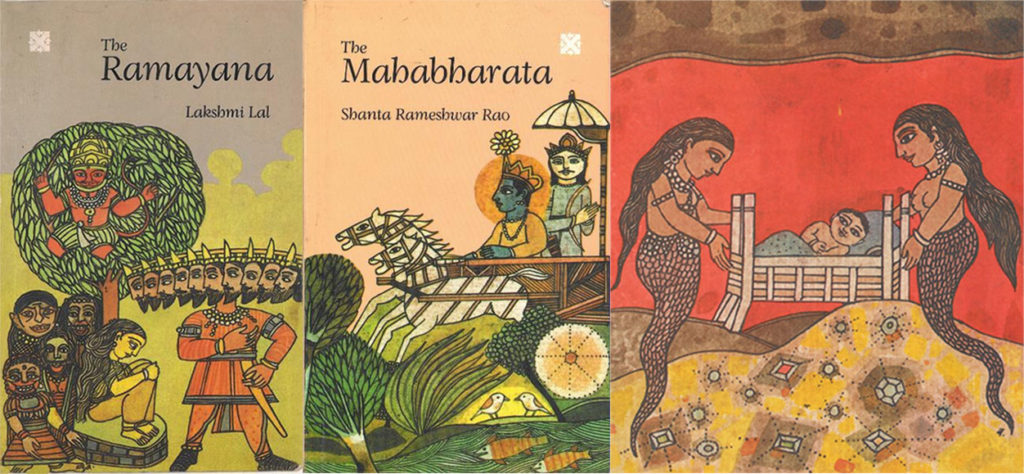
‘The Ramayana’ by Lakshmi Lal, ‘The Mahabharata’ by Shanta Rameshwar Rao and an inside page from ‘In Worship of Shiva’ by Shanta Rameshwar Rao—all illustrated by Badri Narayan
In the late ’70s and the ’80s, Badri was a regular contributor to the literary arts. He illustrated books of poetry, mythology, fiction and fable. He wrote children’s books based on stories from the Jataka Tales and the Panchatantra for the National Book Trust—you can still get your hands on an original Badri for Rs 17 at their website. One of his collaborators was the great Indian litterateur, Mulk Raj Anand, with whom he worked on the children’s book, ‘Some Street Games of India’.
Tableaus
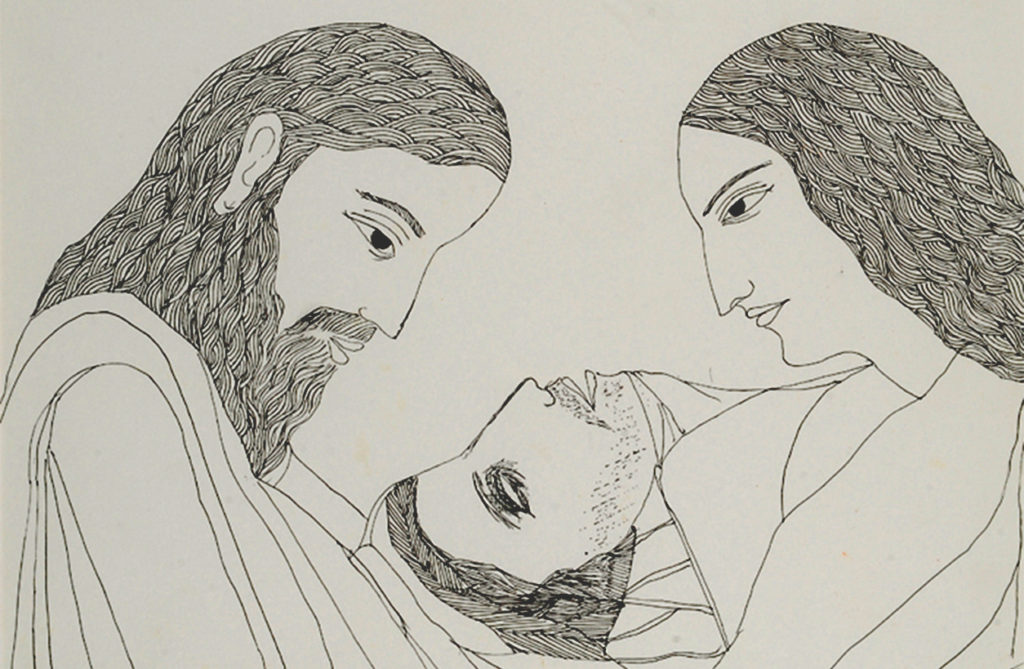
‘Yama, Savitri & Satyavan’ by Badri Narayan from Gallery3C
In a 1965 profile for the Lalit Kala Contemporary journal, art critic Jag Mohan predicted a bright future for the 36-year-old Badri who brought an “intellectual flavour” to his interpretation of such Indian traditions as palm-leaf manuscripts, Kalighat paintings, Adivasi art and Lepakshi murals. Murals and temple drawings were the inspiration for the artist’s childhood works, so it’s not surprising that his earliest muses were characters from the great Indian epics. He would return to them throughout his career; in his late 70s, Badri did a series of paintings on the story of Savitri and Satyavan. It paused on scenes like the one above from Gallery3C, where Savitri is bargaining for her husband’s life with Yama. In Badri’s imagining, even the god of death appears weighed down by the task, his usual boisterousness subdued by Savitri’s devotion.
Fantasies
If you believe that one of the primary functions of art is to offer hope, then you can’t help but be charmed by this artist’s vision. He believed that art could heal; he could think of no greater gift to give to children living in remand homes. He knew art could rekindle a sense of wonder; the word ‘wonderment’ often shows up in reviews of his work and even Badri’s harshest critic would agree that this is a quality in short supply today. And he proved that we don’t have to meekly accept the narratives that have been passed down to us through the ages. We can find creative new ways to rewrite those bedtime stories.

